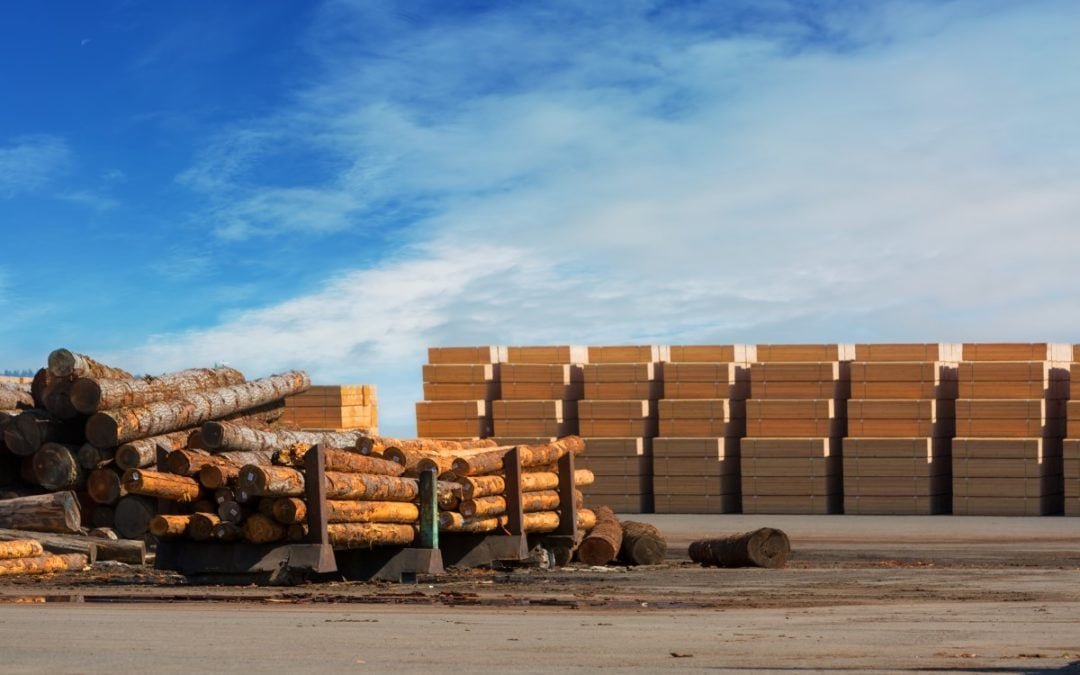Buying Mill Direct – What does it mean? Why is it Important?
You might have heard us at RMFP throw around the term “Mill-Direct” before but might not be clear on what it actually means. Have no fear! We are here to help break it down and explain why it should matter to you. We are different than other lumberyards and building materials suppliers in that buying mill direct is our focus to bring more savings to you, the customer!
Why Buying Mill Direct Makes Sense:
A typical (Non-Mill-Direct) lumber distribution chain looks like this:
Forest to Logger
Logger to Mill
Mill to Remanufacturing Facility – (Depending on the product and this is sometimes combined and part of the mill)
Remanufacturing or Mill to Distributor
Distributor to Retailer
Let’s define some of these terms:
Forest: Forests can specialize in different types of trees like cedar, redwood, douglas fir, or pine. These are found with any company or organization that owns timber rights. They are responsible for planting, maintaining and protecting this valuable natural resource.
Logger: A logger is defined as someone who aids in the process of cutting trees, processing them, and moving them to a location for transport. This is the beginning of the supply chain that provides raw material for many products we see in lumberyards across the country.
Mill: Also known as a sawmill or lumber mill, this is the facility where logs are cut into lumber. They use a motorized saw to cut logs lengthwise to make long pieces, and crosswise to make certain length depending on standard or custom sizes they are responsible for providing. Many times, they are able to take specific requests for profiles of siding or decking, but not always.
Remanufacturing Facility: Here, they take the blanks or cants that the mill has leftover from processing the material from the logger and turn it into the final product. It could be tongue and groove, decking, or a 2×4. Depending on the product, it must go through a remanufacturing facility to finish it off. A beam for example, does not usually need to be remanufactured but other products like those mentioned above need to go through that process because they need additional cutting and finishing. A lot of mills and even distributors have a remanufacturing facility at their location, so it doesn’t need to go off to a separate site- but it is an important step in the manufacturing and distribution chain.
Distributor: A distributor offers the logistics from the remanufacturer/mill to the retailer. They have a network of warehouses set up throughout the country in major markets. They are set up to sell the product to the retailer, the ones that then sell it to the public. They typically act as a wholesaler too by offering a lot of different products from different companies. These brands can now sell their products across the United States without having physical locations in every city. It’s all done through the distributor.
Retailer: A retailer is the final stop in the lumber distribution chain. This is where contractors or homeowners can buy the final product in cities around the country. Big box stores and RMFP would fall under this category.
There are a few idiosyncrasies that happen, despite the traditional supply chain outlined here. There are some hybrid situations where the distributor can act as a wholesaler and may sell direct to contractors, but they may not sell to the public. They are technically considered a wholesaler, but not in the true interest of the homeowner who wants to be able to purchase in the retail sense. This requires homeowners to purchase materials through their contractor who would purchase it from their distributors. Examples of companies like this are: Master Halco, Builder’s First Choice and ProBuild. The end user can expect an additional markup that their contractor puts on their final price, because they are buying the materials for them.
So far we have defined some important terms that are vital when it comes to referring to “Mill Direct” purchasing. Next, we will discuss in depth the benefits of working with a Mill-Direct retailer, like Rocky Mountain Forest Products.
Did you know that around 65% of our yard stock comes directly from the mill, 15% comes from a remanufacturing facility and around 20% comes from a wholesaler or distributor? Compare that to a typical Big Box store like Home Depot or Lowe’s which purchases on average 90% of their yard stock from a wholesaler or distributor. There are definitely exceptions to this statistic, but in general they are not purchasing their yard stock mill direct. So what types of materials does RMFP purchase mill direct, from a remanufacturing facility or from a distributor?
Mill Direct: Most of our fencing material, cedar decking, all stocked siding patterns such as channel, bevel, tongue and groove, shiplap, all interior and exterior trim, and rough sawn doug fir timbers are all purchased directly from the mill.
Remanufacturing Facility: All of our exotic hardwood decking, redwood decking, log lap siding and any custom siding patterns comes from a remanufacturing facility.
Wholesaler/Distributor: All of our composite decking, hardware, landscape timbers and other brand specific items come from a wholesaler or distributor.
Why Should you Care About Buying Mill Direct?
By cutting out the middleman, we are able to help keep the cost low without added costs typically associated with every level of the supply chain. We are able to increase our margins and sell the customer a price friendly product, because we’ve taken it back to basics with the products we supply. Going straight to the source helps us in a variety of different ways. With our mill-direct buying relationships, we are able to sell our products at 30% less than Home Depot or Lowe’s because we buy directly from the mill with no markups.
Better Quality Control Without the Games
We are able to offer better quality control with our mill direct products because sometimes wholesalers or distributors will play grading games. For us however, when we buy from mill, we buy the true exact grade as it should be. We know exactly what we are getting, no questions asked. If we pick it up the same material locally from a wholesaler or distributor, some companies will sell a lower grade claiming it’s a higher grade. This is deceiving to everyone involved, because it’s not the same material.
For example, we have purchased a true reversible cedar deck board directly from the mill and paid less money than if we tried to pick it up locally from a wholesaler. The material from the wholesaler will have one side be appearance grade with the back side only having 80-95% usable material because of the defects on back. At the mill level, this product is graded as a one faced product, but locally, the wholesaler can only get their hands on the lower grade and will sell it claiming its a higher grade.
Another example is that a lot of box stores carry a #3 and better picket, which is a rustic grade. They will then sell it at standard price, because the supply chain messes it up with all of the additional markups. So many people have touched it throughout the supply chain that they have to sell it as standard price, even though its not standard grade.
Our relationships allow us transparency and honesty at the mill level and we know what the material will look like when it shows up. A lot of lumberyards rely on the mercy of their wholesalers to ensure quality all the way up to the mill level. They sometimes don’t even know what the material looks like until it’s delivered to a job site, which can be stressful for everyone involved.
Our goal at RMFP is to tell consumers exactly what they are getting, with no grading games. If it’s an off grade or low grade material, we will still sell it to you and you can pay a lower price- but we will tell you exactly what to expect with that grade so there are no surprises.
We are honored to explain the lumber distribution chain and why buying mill direct matters. We will continue to invest in our mill direct relationships to ensure that we can continue to bring our customers the best quality materials at the absolute best prices possible!

 CALL FOR A QUOTE
CALL FOR A QUOTE


